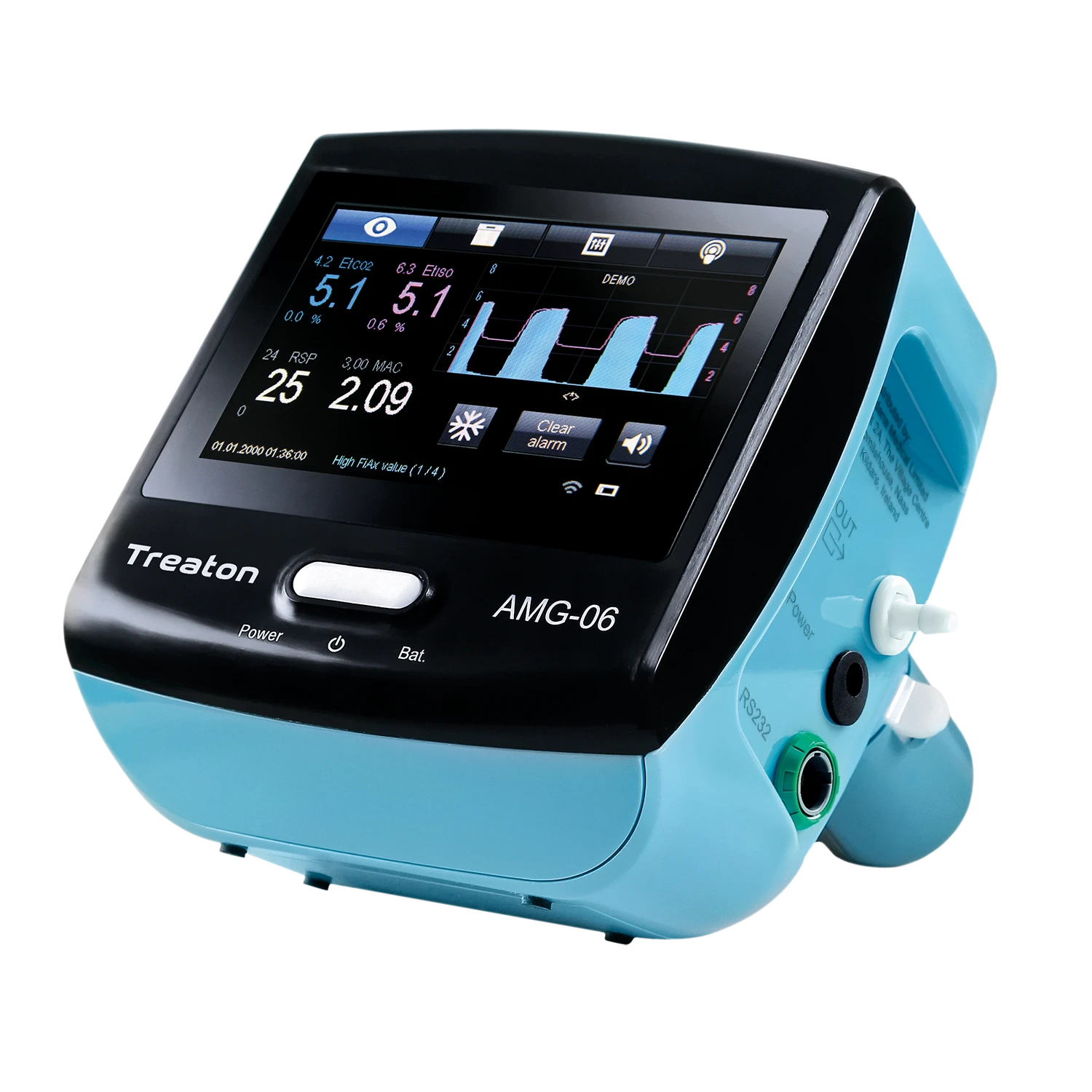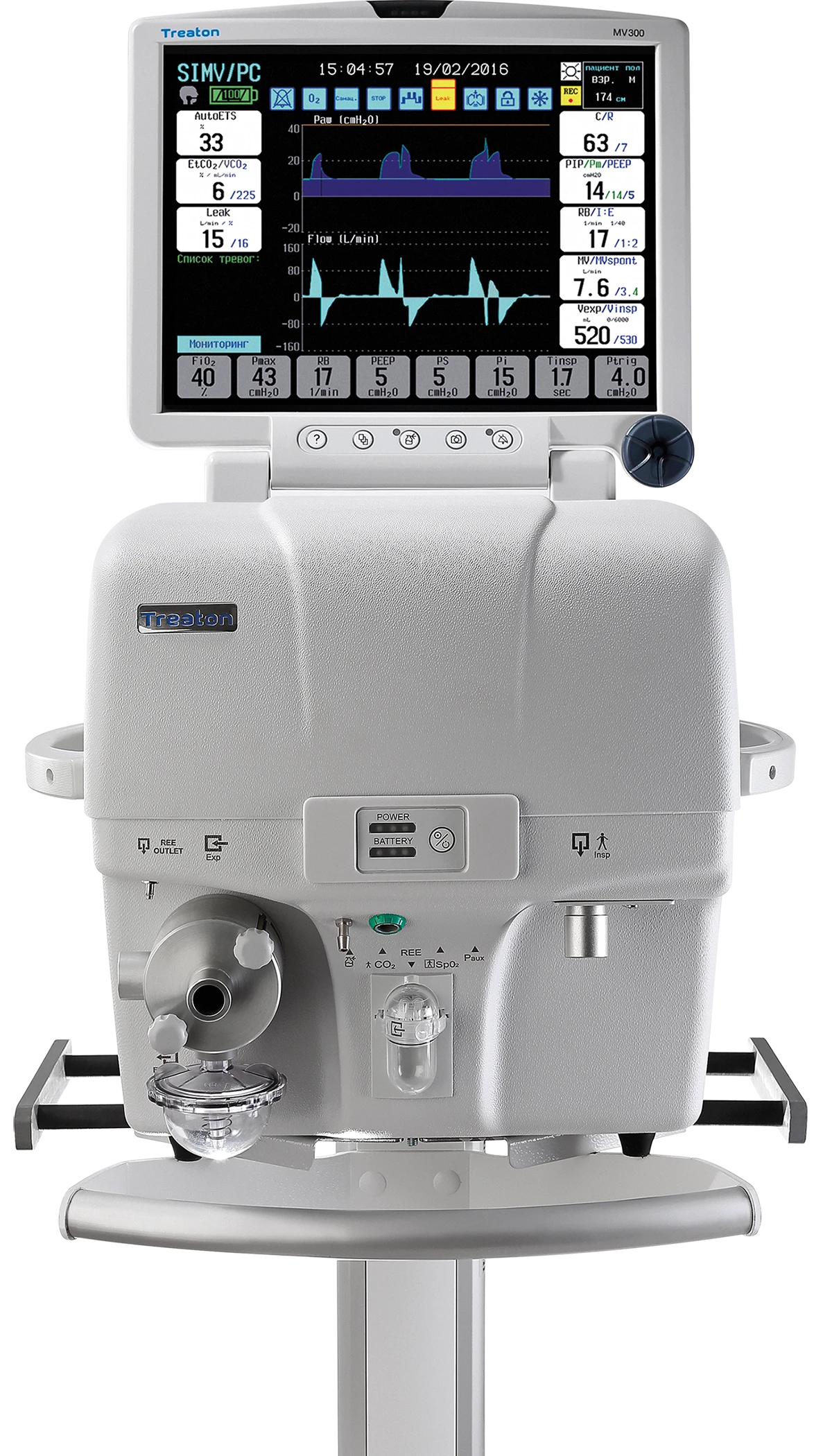
About intensive care
QuRe mainstream capnography sensor measuring CO2 concentration uses the infrared spectroscopy method. All gases have an inherent absorption spectrum. CO2 molecules absorb infrared radiation in a limited spectrum of 4.26 μm wavelength; the quantity of absorbed radiation in the gas sample is compared to the initial value. The sensor thus measures the absorption of infrared radiation with the wavelength inherent to carbon dioxide in the gas sample put into the measuring chamber.
Our sensor has all the standard advantages of such design: there are no moving parts, which has a positive impact on the accuracy and reliability of measurements and the sensor’s service life. Each sensor is calibrated with reference gas mixtures. The device needs no periodic calibrations because it applies an original concentration measurement method. Device’s calibrated settings do not deteriorate with time or due to various impacts on the sensor (temperature, contamination of the measuring cell and optic elements). The sensor has a built-in atmospheric pressure sensor, which makes it self-calibrating.
As we designed this sensor, we tried to make sure the device responds to changes of carbon dioxide concentration in the respiratory gas as quickly as possible. Accuracy of the capnogram shape and its trends provide valuable information for the physician. It is certainly not the only source of information to determine the clinical condition, but capnometry data is currently mandatory all over the world to make clinical decisions.
The curve’s profile provides data to assess the efficiency of circulation and resuscitation efforts, as well as the condition of the airways, making it possible to understand what is happening inside. Small changes in the capnogram shape may indicate the position of the intubation tube; reflect ventilator failures – like problems with its valves, circuit, CO2 absorbers, ventilator drives, mechanical parts of artificial airways – or failures in the cardiovascular system; show the level of relaxation, etc.
Our design was focused on finding the best solution with the quickest response to changes in СО2 concentration. The sensor includes high-speed optics, absorbers and light sources. That is why the sensor’s response time to an actual change in the carbon dioxide concentration is no more than 10 milliseconds, which is the best performance in the industry. The sensor was named “QuRe”, combining the words “quick” and “response”.
The capnograph’s response time to actual carbon dioxide concentration is important to get an accurate clinical picture. Hyper- and hypocapnia situations may be life-threatening and require immediate intervention by a healthcare professional.
A capnogram is one of the ways of assessing and adjusting the respiratory minute volume. The curve in the diagram below demonstrates hypoventilation. We can see the dropping carbon dioxide level, which evidences gaseous exchange disorders.
Have some questions? Write us and we answer you
Partner Registration is available for our Distributors and allow you to download our latest Technical Data Sheets, User Manuals, Service Manuals, Certificates and Marketing Materials.
Registration is an easy process. Please click the 'Register' button to begin, fill in the form, and you will be contacted by our International Sales Team within a couple of working days about your registration, User ID and password.
If you are having problems filling out this form, send us an email: info@treat-on.com for assistance.

